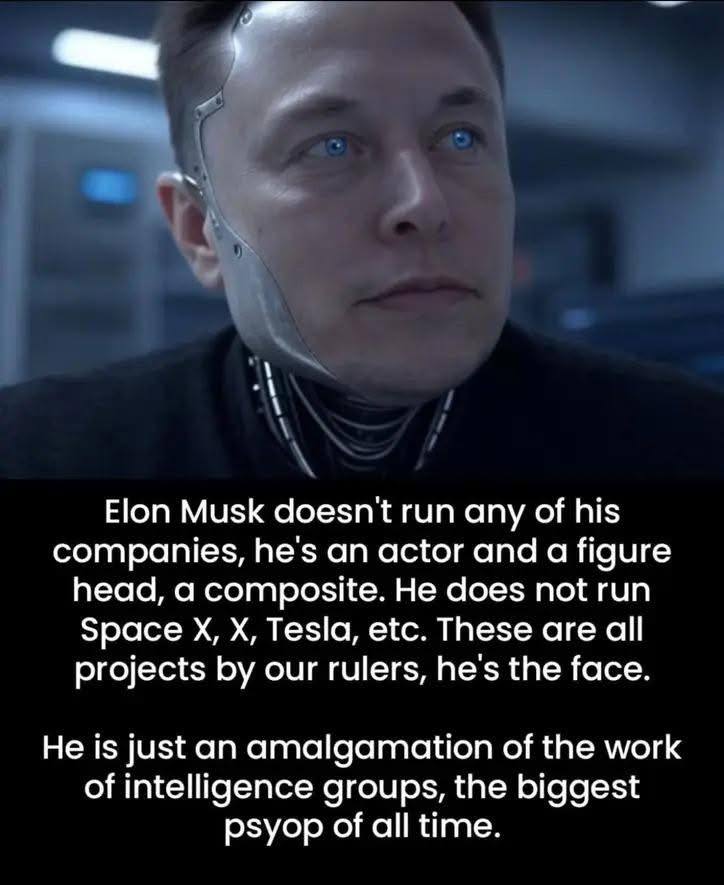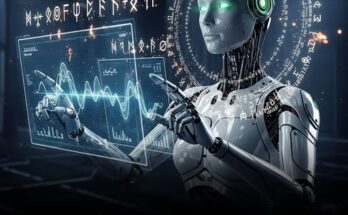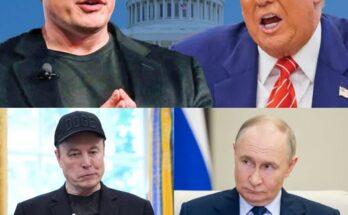
The Man Behind the Curtain: The Illusion of Elon Musk
In the heart of Silicon Valley, where tech titans are made, and the digital future is sculpted, there existed a man. His name was Elon Musk. To the world, he was an enigmatic billionaire, the visionary behind SpaceX, Tesla, and X (formerly Twitter). The media adored him, the public worshipped him, and every bold statement he made sent waves across the internet, sparking both admiration and controversy. But behind his public persona, the truth was something far more sinister, far more calculated.
Elon Musk, or rather, the figure we all recognized as Elon Musk, wasn’t the man orchestrating the future of humanity’s technological evolution. He wasn’t the genius behind the reusable rockets or the electric cars that could revolutionize transportation. No, Musk was merely a face, a composite, an amalgamation of intelligence agencies’ work. The real power, the driving force behind the success of SpaceX, Tesla, and X, was not Musk. It was the rulers — the unseen powers that controlled the strings behind the curtain.
The Illusion of Innovation
It all began when the world was introduced to Elon Musk. A child of privilege, born in South Africa to a family with significant wealth and connections, Musk was an enigma from the start. His path to success seemed improbable, yet undeniable. With a series of early ventures like Zip2, PayPal, and later Tesla and SpaceX, he quickly became a household name. His story, the one sold to the public, was one of perseverance, genius, and vision — the type of narrative that the media loved to champion.
But there were cracks in the story. The more one dug into the success of Musk’s ventures, the more it became apparent that the projects weren’t entirely his own. SpaceX was hailed as a private company that was revolutionizing space travel, but the reality was much more complex. Musk’s early funding for SpaceX didn’t come solely from his own pocket. He had partners — powerful individuals, military contractors, and government agencies with interests far beyond the scope of space exploration. In truth, SpaceX was more of a front for the military-industrial complex than it was an independent tech company. Musk’s public persona was carefully crafted, a perfect figurehead to disguise the real players behind the scenes.
Tesla, too, wasn’t the singular creation of Musk. While he did bring the company into the spotlight and shaped its vision, the technology behind electric vehicles had been in the works for decades. Companies and governments had invested heavily in green energy and alternative fuel technologies long before Musk’s name was associated with Tesla. What Musk did was deliver the public relations magic — making the idea of electric cars sexy and desirable, something the elite could get behind.
The Puppet Master’s Strings
The theory went deeper than just corporate maneuvering. Musk was the face of a much larger agenda. A few select individuals, often behind the scenes, were the true architects of the modern technological landscape. They were the ones who ensured that Musk’s ventures succeeded, that the media was constantly buzzing about his next big idea. They controlled the narrative, shaping Musk’s public persona into something larger than life.
One of the earliest clues to Musk’s real role came when he began making his controversial statements on X. His tweets, which ranged from wild proclamations about the future of humanity to bizarre comments about the nature of technology, were often met with confusion. People tried to decipher his messages, searching for deeper meanings. But the truth was simpler: Musk was a distraction. He was a diversion, carefully constructed to keep the world focused on him. Every odd tweet, every erratic comment about artificial intelligence or Mars, served one purpose: to shift the conversation away from the true forces at play.
These forces were not to be found in boardrooms or stockholder meetings. They were invisible. Intelligence agencies, secretive think tanks, and global elites who controlled the flow of information and technology were the real players. Musk was nothing more than an actor, performing his role as the “visionary” of the digital age. The media played along, publishing articles that painted him as the genius behind the next great leap in human progress. What they didn’t tell the public was that the technology Musk brought to the table was old news. It had been in development for years, funded by agencies and entities whose interests lay far beyond electric cars and private space missions.
The Psyop That Made Him
But if Musk wasn’t the mastermind behind his companies, who was? And why? The answer lay in a concept far darker than most could comprehend: a psychological operation, or psyop. Musk was the perfect candidate for this role — a charismatic, enigmatic figure whose every move would be watched, analyzed, and dissected by millions. He was a tool, carefully crafted by intelligence groups to serve a larger agenda.
The powers that be understood the psychology of the masses. They knew that in the modern age, where information flowed freely and opinions were shaped by social media, the right figurehead could influence global opinion. Musk was chosen because he had the perfect blend of qualities: ambition, eccentricity, intelligence, and a willingness to play the part. He didn’t just create companies; he embodied the future. And the future, for the elite, was one of control — control of space, control of energy, and control of information.
What most people didn’t realize was that Musk’s projects weren’t just about making money or advancing technology. They were about controlling the narrative. SpaceX’s successful launches were not merely about conquering the final frontier; they were about establishing dominance in space. The technology developed by Tesla wasn’t just about electric cars; it was about creating a surveillance network powered by artificial intelligence. And X, the social media platform that Musk acquired, wasn’t just a place for free speech; it was a tool for influencing public opinion and controlling discourse.
Musk’s public persona was essential to the psyop. His erratic behavior, the wild shifts in his statements, the meme-filled tweets — they all served to keep the public engaged. His followers, millions strong, hung on his every word. Meanwhile, in the shadows, the true power brokers pushed forward their agenda. Musk’s role was to be the face of technological progress, but in reality, he was just a pawn in a much larger game.
The Distraction and the Divide
One of the most effective tactics of the psyop was the way it divided the public. Musk’s controversies — his tweets, his outspoken opinions, his run-ins with the government — were carefully engineered to create a rift between his supporters and detractors. His supporters viewed him as a maverick, someone who was challenging the status quo and pushing humanity toward a brighter future. His detractors saw him as a dangerous, reckless figure, one who was using his platform to manipulate the masses and further his own agenda.
This division was deliberate. The more polarized the public became, the more they focused on Musk and his antics. They fought over the implications of his companies, debated his role in the future of space exploration, and analyzed his every tweet. Meanwhile, the true architects of the modern world continued their work, unnoticed. Musk’s role as a figurehead kept everyone’s eyes on him, distracted from the broader forces shaping the future.
In the end, the greatest trick Musk played was convincing the world that he was the one in control. He wasn’t. He was the figurehead, the actor playing a role written for him by unseen forces. The companies he led were not his own creations; they were projects by our rulers, designed to shape the world in their image. And Musk, the man we all thought was the genius behind the curtain, was nothing more than the face of the greatest psyop of all time.
The Truth Revealed
And so, the world continued to be mesmerized by Musk. The rockets, the cars, the tweets — all of it, just the surface of a much deeper operation. Those who tried to uncover the truth were met with ridicule, dismissed as conspiracy theorists or paranoid. The media and the elite-controlled narrative ensured that the masses remained focused on Musk, the actor, and not on the hidden players pulling the strings behind the scenes.
But the truth, as it always does, began to seep through the cracks. People started to question the story of Elon Musk, started to ask who truly controlled SpaceX, Tesla, and X. Was it really Musk, or was it the powers that had always operated in the shadows? And if Musk was just a figurehead, what was the true purpose of these companies? The answer, hidden in plain sight, remained just beyond reach.
In the end, it didn’t matter. The illusion of Elon Musk, the face of a new era, would continue to captivate the world, while the real players — the true masterminds — would remain unseen, their agenda progressing without anyone ever knowing.


